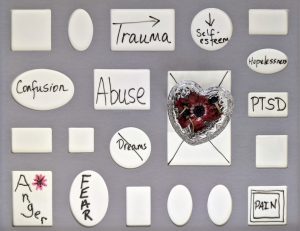How to fall asleep faster and sleep better
 Get help sleeping
Get help sleeping
We all have evenings when we find it hard to fall asleep or we wake up in the night. For many of us, the coronavirus (COVID-19) outbreak may have affected our sleep too.
Good-quality sleep makes a big difference to how we feel, mentally and physically, so it’s important to get enough. Watch our video on simple tips for better sleep, with Colin Espie, professor of sleep medicine at the University of Oxford.
The advice you will find here is a good way to get you thinking about your sleep and what may be stopping you from sleeping well. We also have some simple steps you can take to make a change.
1. Get into a daily routine
All the changes we have been through may have made it harder to maintain a consistent routine, but having a regular sleeping pattern is really important for good sleep. If you can wake up, wind down and go to bed around the same time each day, it will really help. Avoid napping too, if possible. Remember, your sleep routine starts before you actually get into bed, so build in time every evening to wind down – and try to switch off from your tech. Things like reading, gentle stretches or meditation are a good way to unwind, and keeping chargers for your devices out of the bedroom can help you avoid absent-minded scrolling.
2. Manage your worries
Lots of us have had extra concerns or anxiety because of COVID-19, and these feelings can affect how easily you fall asleep and how well you sleep. There are things you can do in your day to help manage your worries, like talking to someone you trust and switching off from the news. If you often lie awake worrying, set aside time before bed to make a to-do list for the next day – this can be a good way to put your mind at rest. Using techniques like reframing unhelpful thoughts might also help.
3. Prepare your body for sleep
Our physical health and how we look after our body can have a big effect on our sleep. It can be easy to fall into unhealthy patterns of behaviour that can make your sleep worse, especially at times like these. Having caffeine, alcohol, nicotine or a big meal too close to bedtime can stop you falling asleep and prevent deep sleep. Try to avoid them before bed and see if things improve.
Regular exercise is also great for sleep. Just remember to steer clear of anything too vigorous right before bedtime if you find it affects your sleep, and make sure you follow the social distancing guidelines when exercising.
4. Create a restful environment
Simple things can have a big impact when it comes to falling asleep and staying asleep. It’s generally easier to drop off when it’s cool, dark and quiet – but the right sleep environment is personal, so try different things and see what works for you. Wearing earplugs, putting your phone on silent and face down (or out of the room entirely), keeping clocks out of view and making sure the room is well ventilated can all make a big difference. Some people also find playing ambient sounds like rainfall, gentle music or white noise helpful.
5. Confront sleeplessness
If you’re lying awake unable to sleep, do no not try to force it. If you’re tired and enjoying the feeling of resting, then sleep may naturally take over. But if not, get up and do something relaxing for a bit, like reading a book or listening to quiet music, and go back to bed when you feel sleepier.

 Myths
Myths Intrusive thoughts are sudden, involuntary thoughts that can be disturbing. These thoughts can be distressing for the individual, but they do not lead to harmful action.
Intrusive thoughts are sudden, involuntary thoughts that can be disturbing. These thoughts can be distressing for the individual, but they do not lead to harmful action. People with obsessive-compulsive disorder (OCD) experience persistent or recurring thoughts that are disturbing and cause anxiety. People with
People with obsessive-compulsive disorder (OCD) experience persistent or recurring thoughts that are disturbing and cause anxiety. People with  Because of individual differences, different methods have been used for gaining information. Most people, that’s students and even adults require the
Because of individual differences, different methods have been used for gaining information. Most people, that’s students and even adults require the  No single test can diagnose cancer accurately. A thorough history and physical examination together with diagnostic tests usually require a thorough evaluation. Many tests are necessary if a person has cancer or if a different condition (e.g. an infection) imitates cancer symptoms.
No single test can diagnose cancer accurately. A thorough history and physical examination together with diagnostic tests usually require a thorough evaluation. Many tests are necessary if a person has cancer or if a different condition (e.g. an infection) imitates cancer symptoms. A case study is a comprehensive study to analyze a particular disease, region or event. It requires that the researcher takes a lot of time to interact with the study object, to collect evidence and to reinforce the final claims of the study.
A case study is a comprehensive study to analyze a particular disease, region or event. It requires that the researcher takes a lot of time to interact with the study object, to collect evidence and to reinforce the final claims of the study. Nurses have been known to have the toughest jobs. They undergo a lot of
Nurses have been known to have the toughest jobs. They undergo a lot of  PTSD symptoms can vary in intensity over time. You may have more PTSD symptoms when you’re stressed in general, or when you come across reminders of what you went through. For example, you may hear a car backfire and relive combat experiences. Or you may see a report on the news about a sexual assault and feel overcome by memories of your own assault.
PTSD symptoms can vary in intensity over time. You may have more PTSD symptoms when you’re stressed in general, or when you come across reminders of what you went through. For example, you may hear a car backfire and relive combat experiences. Or you may see a report on the news about a sexual assault and feel overcome by memories of your own assault. Just when you thought writing essays was getting to be a bit too much, now your professors are asking you to write proposals to write essays. This can feel quite debilitating especially if you don’t know how to write a
Just when you thought writing essays was getting to be a bit too much, now your professors are asking you to write proposals to write essays. This can feel quite debilitating especially if you don’t know how to write a 